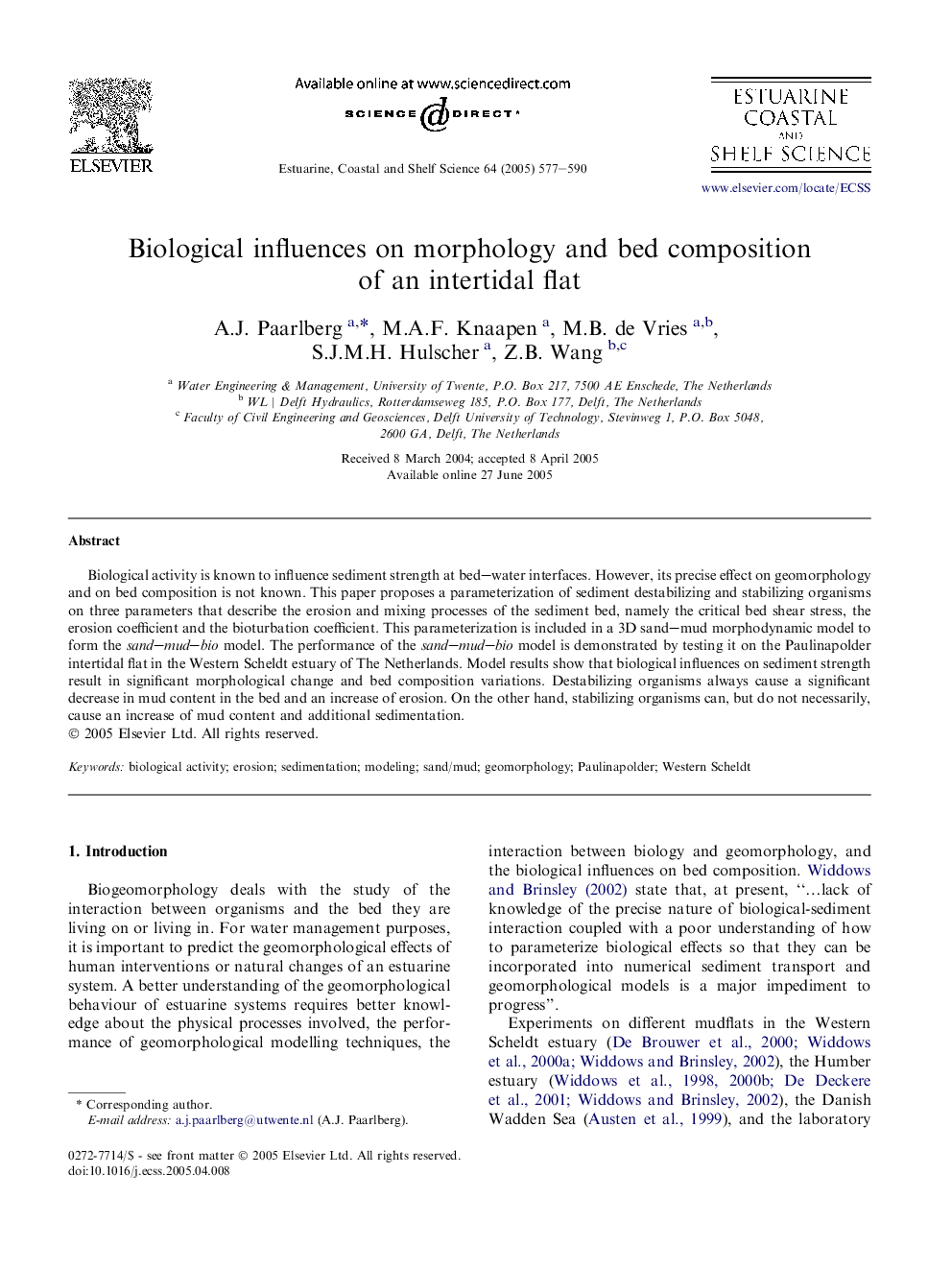| Article ID | Journal | Published Year | Pages | File Type |
|---|---|---|---|---|
| 9480744 | Estuarine, Coastal and Shelf Science | 2005 | 14 Pages |
Abstract
Biological activity is known to influence sediment strength at bed-water interfaces. However, its precise effect on geomorphology and on bed composition is not known. This paper proposes a parameterization of sediment destabilizing and stabilizing organisms on three parameters that describe the erosion and mixing processes of the sediment bed, namely the critical bed shear stress, the erosion coefficient and the bioturbation coefficient. This parameterization is included in a 3D sand-mud morphodynamic model to form the sand-mud-bio model. The performance of the sand-mud-bio model is demonstrated by testing it on the Paulinapolder intertidal flat in the Western Scheldt estuary of The Netherlands. Model results show that biological influences on sediment strength result in significant morphological change and bed composition variations. Destabilizing organisms always cause a significant decrease in mud content in the bed and an increase of erosion. On the other hand, stabilizing organisms can, but do not necessarily, cause an increase of mud content and additional sedimentation.
Related Topics
Physical Sciences and Engineering
Earth and Planetary Sciences
Geology
Authors
A.J. Paarlberg, M.A.F. Knaapen, M.B. de Vries, S.J.M.H. Hulscher, Z.B. Wang,
